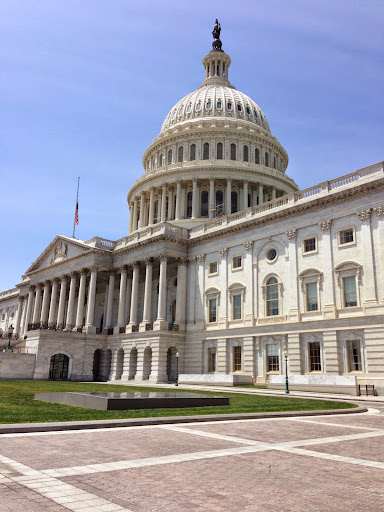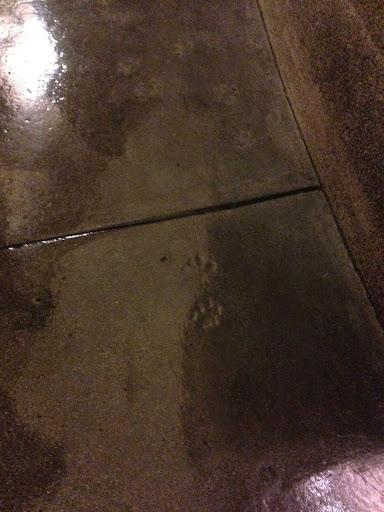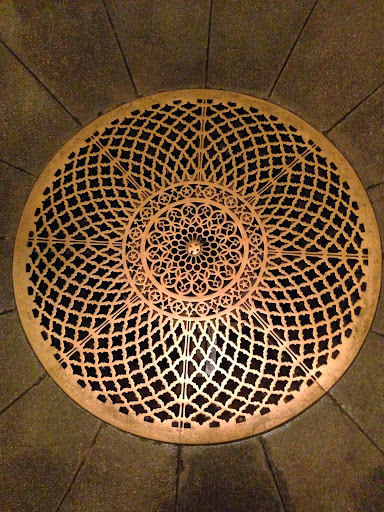Visiting Washington, DC: 8 Interesting Spaces in the Capitol Building
In a few days, my family and I will be calling home to one of our favorite places to visit: Washington, D.C.
Over the weekend, we took a trip to “recon” the area and familiarize ourselves with where we will be living -- it’s the military in us. During our visit, my dad was able to set up a private tour of the Capitol building for our family. The architecture was absolutely phenomenal. I marveled at the thought that people like you and I created all of this, painted every wall by hand with such intricate details, and made it what it is today! Next time I’m working on a project and feel impatient, I’ll have to think of this building…

However, today I wanted to let you in on several of the unusual parts of the Capitol that we learned about. If you ever want to see the inside of this amazing structure, staff will provide you with a tour of the building and give you a multitude of intriguing facts about its history…All for free! Visit their website here: http://www.visitthecapitol.gov/plan-visit/book-tour-capitol#.U7P9qcY0x4M It is fairly straightforward on how to set up an appointment, and you can tour in a group of up to 15 people!
I was intrigued by everything we learned on our tour and wanted to share more. I spoke with my good friend, Nina Boscia, who is an intern at the Capitol this summer and gives tours as part of her internship. Her comments can be found in quotations. Here are some of the juicy details.
1. When the Capitol was under attack during the War of 1812, soldiers battled up along the staircases and as they lay dying, they would engrave crosses above them into the steps.

“During the War of 1812, the Capitol building and the White House were burned on an evening in late August. At the time the Capitol building was burned, it was still being constructed and only the north and south wings were actually in place. A walkway that would eventually become the center building was in place, but the center of the building never burned during the war because it was not there yet (a common misconception). The burning of the wings caused severe damage, but architect Henry Latrobe did use fire-proof materials that helped to salvage much of the interior of the wings. The exterior of the wings did actually survive (it did not burn to the ground!). The British soldiers wanted to not only help themselves escape from the burning building, but also hurt the American moral in the best way possible. To do that, they focused on the primary rooms, including National Statuary Hall (the Old House of Representatives) and the Clerk's room. Much was burned there, including documents and furniture. However, because the building was burning quickly, soldiers were forced to exit the south wing and left a lot untouched. Most of what you see is original.”
2. This area where the star lies in the middle of the floor, has been claimed to be where George Washington’s casket was originally kept. This is not a place that you see on a regular tour. Our tour guide had mentioned that it was where his casket was before they moved it, but Nina told me otherwise. Perhaps this one is a mystery!

“When George Washington died at Mount Vernon in 1799, his family listened to his will directions that showed his wish to be buried at the Mount Vernon estate. However, because his original family stone was deteriorating, Washington had selected a new stone and a new place that eventually his body, along with the remains of Martha Washington, would be moved to in 1831. It's a total myth that George Washington is buried in the floor of the Crypt of the Capitol! No one is buried there.”
3. This was a section of the Capitol building that is believed to be the original cornerstone, although, we were told that there is some controversy over whether or not that is true. Since the Capitol building was burned down under attack, we saw a few of the pieces that remain from the original structure, including a sculpture of George Washington.

“The original cornerstone of the Capitol was laid in September of 1793 by George Washington and eight of his contemporaries that were freemasons. Caleb Bentley, a silversmith, made the original cornerstone. The laying of the cornerstone occurred after the plans for the architecture of the Capitol were accepted and preceded the beginning of the Capitol construction.”
4. I’m not the biggest history buff, but standing in the Supreme Court Chamber made me wonder how many court cases were decided in that very spot that shaped America to be what it is to this day.
“The old Supreme Court Chamber was used from 1810-1860 and was the first room used by the highest judiciary system in the US. It was built by Henry Latrobe and was considered a major architectural achievement for the era because the shaping is something that was basically never used before in the United States. Chief Justice John Marshall presided over the court in this room when it was first being used. One of the most interesting aspects of the room is the clock hanging over the fireplace. It was purchased for $180 in 1837-- a massive amount of money back then, making it worth much more today. It was ordered to hang over the fireplace by Chief Justice Taney, a very controversial justice who some say started the Civil War through approving the three-fifths Compromise.”
5. The capitol building itself is a work of art and is extraordinary. However, there is an obvious difference between the two wings. It is apparent that a larger amount of funding goes into the Senate’s side of the building versus the House of Representatives!
“The House is divided into 3 office buildings: Cannon, Longworth, and Rayburn. The Senate is divided into 3 office buildings as well: Russell, Hart, and Dirksen. As we learned in school but so many people don't realize, the Senate has 100 members (2 for each state) and the House has 435 voting members (based on population from each state). There are actually more than 435 members, but some areas don't have voting rights, such as DC.”
6. If you look closely, you will find cat paw-prints along the floors of the capitol building. I would have never noticed had our tour guide not pointed them out! They are the cutest (and most peculiar) thing.

“The flooring of the Capitol is all original, and that's why we are able to note some odd footprints and markings in the floor while we tour. There are cat paw prints, but there are also other animal prints. This shows how different the Capitol was back when it was first built: today we could never imagine animals roaming such a prestigious building, but back then it was common because animals were used for catching mice, and other rodents, much more than they are today. The most specific spot where animal prints can be found is by the exit of the Old Supreme Court Chamber underneath the chandelier, next to the ventilation system.”
7. Standing here meant that I was standing directly in the middle of the Captiol building, which is also considered the very middle of Washington D.C.!

“The compass stone is located in the Crypt of the Capitol Building. The Crypt is the room holding up the Rotunda, hence the name 'crypt' (holding up an important structure). The Crypt is lined with 13 statues to represent each of the 13 original colonies. Each statue is a figure from each of the 13 colonies. The Crypt holds up the Rotunda with 40 doric columns each positioned equally around the room. In the center of the room lies the compass stone (the white stone that looks like a compass). This is not only the center of the Capitol building but also the center of the city of DC. That's why we describe DC with NW, SW, NE, and SE. All roads, as required by law, are to be modeled around this compass stone--making it very difficult for architectural adjustments to the city in modern times. Every modern president elect has stood on this compass stone and walked straight through the Crypt, down the stairs, and out to the front of the Capitol to his inauguration.”
8. Our last stop on the tour was the underground railway system. If you’ve ever watched any TV shows or movies that are based on Congress, the President, etc. such as Scandal or House of Cards, you’ve seen the actors move underground during emergencies or simply to get around more efficiently--this is true!!
“The underground railway system is used by government staff and visitors to get back and forth to the Capitol from the 3 House office buildings and the 3 Senate office buildings. The original line was built in 1909 to connect the Russell building to the Capitol. Later, additional rails were added to connect Dirksen and then Rayburn, respectively.”
I highly recommend a tour of the capitol if you are ever in the area. It seems fitting that to this day, due to its history’s disputable facts and the complicated legal decisions made there, it is a place of controversy. Walking through the building made me truly appreciate what the people of our country were able to do without all of the technology that we have now. Hearing the stories and thinking that, in the very place I stood, people fought for the freedom that we take for granted each day, was so surreal! It gave me a new appreciation for the building, as well as our history as a country. My favorite part of the tour was sitting in the House chamber, where the State of the Union Address is given. It brought life to the room that I have admired and only ever seen on TV. We could have spent all day at the Capitol, but unfortunately only had a couple of hours. I suppose that means we’ll have to make a trip back sometime soon!

Alexis Donaldson is the Intercultural Editor for Wandering Educators
All photos courtesy and copyright Alexis Donaldson
Several of the unusual parts of the Capitol - where history comes alive
Posted by: Alexis Donaldson



















